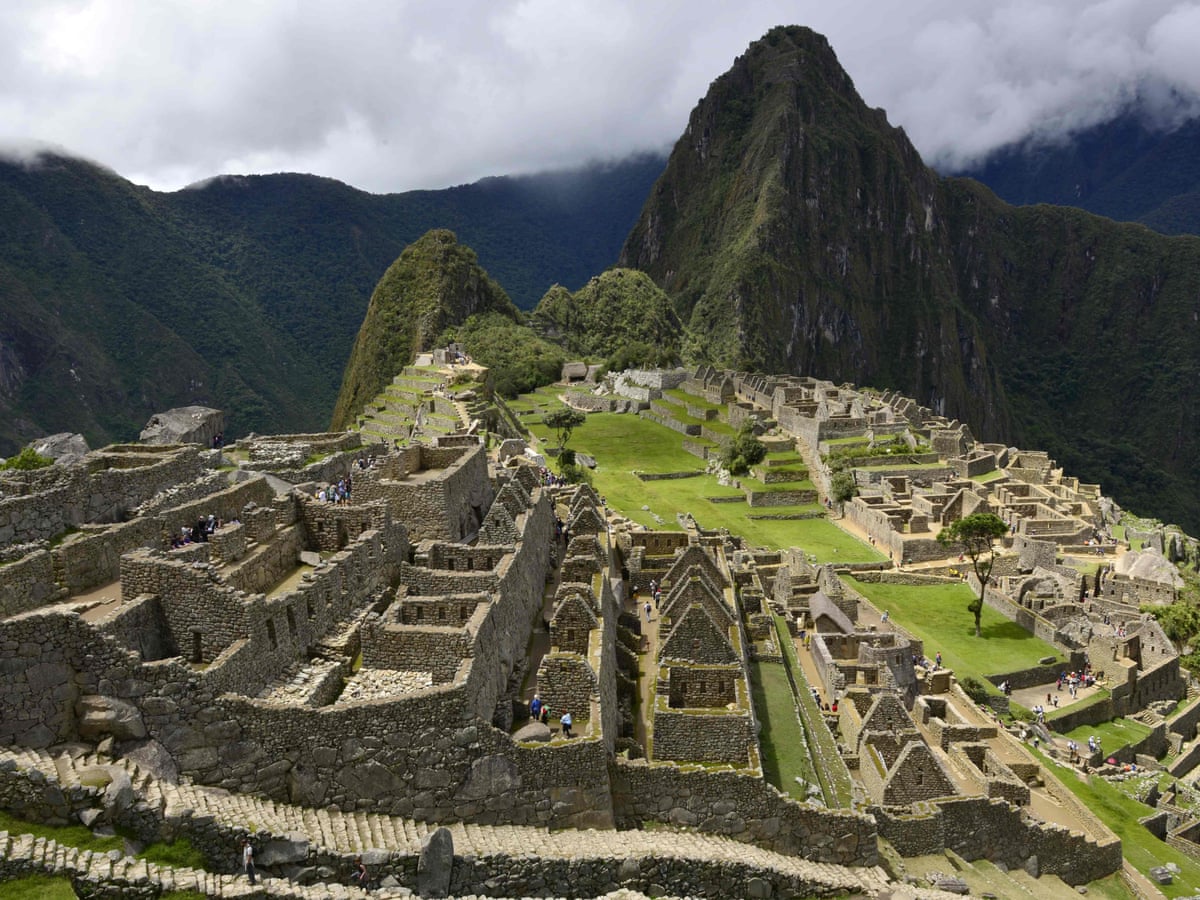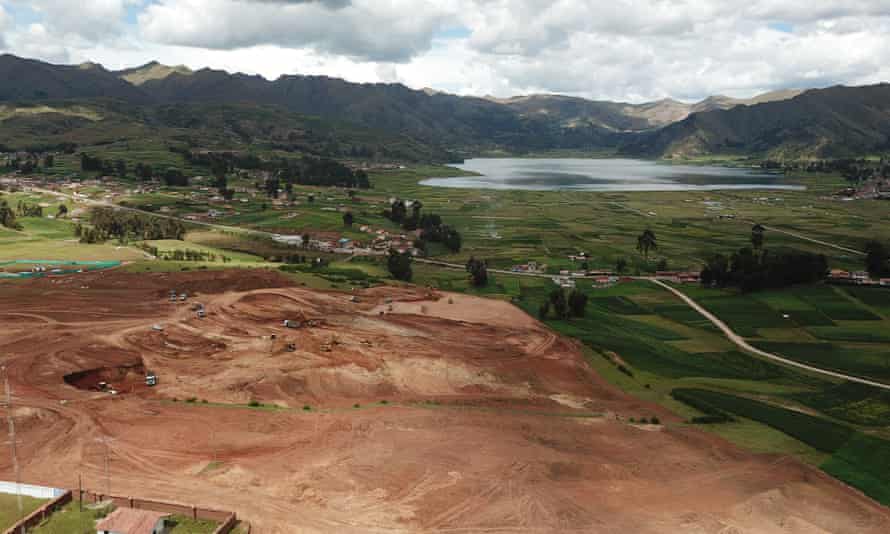

https://www.theguardian.com/cities/2019/may/15/archaeologists-outraged-over-plans-for-machu-picchu-airport-chinchero

https://www.perunorth.com/inca-pre-columbian-empire

https://www.salkantaytrekking.com/blog/conserving-inca-food-agriculture-cusco-peru/

https://trippingovertheworld.wordpress.com/2016/06/20/these-buildings-are-inca-below-and-conquistador-on-top/
Material Basis of Spanish colonization:
The Incan empire was one of wealth and power, when Spanish conquistadors arrived in 1532 and began the process of overthrowing and acquiring the dynasty, they were able to thrive off the massive wealth and infrastructure that existed from the Inea (or Incan I have seen both) people. The empire was strong, but the Spanish came at a weak point following a brutal civil war essentially allowing them to be lucky in their conquest over the people. The Incan people had a wealth of gold and silver that was distributed as loot following the fall of the Incan empire. From just the ransom of emperor Atahuallpa they acquired silver and gold worth today $50 million. Following his death Pizarro and his people raided Cuzco for its enormous wealth and gold as well as the numerous treasures in the Coricancha temple before looting other cities in the Andes. Once the Spanish colonizers were able to take over the Inca Empire, they subjected remaining indigenous peoples to enslavement, forced labor, and brutal conversion to Catholicism. The existing labyrinth like infrastructure and political design allowed the Spanish to take over rule without needing to establish much new infrastructure and instead was able to acquire wealth from the gold and treasures of the Incan empire, which was the main material basis of the Spanish colonization. In addition labor was done by an existing infrastructure of enslaved people so there was no need to invest much in that.
Political and Judicial basis of Spanish colonization:
Francisco Pizarro and the other conquistadors did not come to Peru with the intention to take over, but just to acquire treasure. However they acquired support from rebel people who had not integrated into the Incan society or where unhappy with their rule, as well as people from neighboring tribes who disliked the Incan empire. The Spanish king Charles V promised Francisco Pizarro that he could be governor to any new territory he discovered as long as crown got 1/5 of the discovered wealth. The reason the Spanish were able to take and keep power over the area is because the Incan empire was in a spot of weakness and relied on military and forced compliance of conquered tribes and states of people. Wayna Qhapaq the rulers death had parked a civil war with his two sons Waskar and Atahuallpa competing for power that left the country very weak. In addition to political weakness of country, the Spanish brought over diseases that killed 65-90% of different populations of people and severely weakened the Incan state. With those weaknesses existing, when Pizarro captured and held Atahuallpa captive, the Spanish were able to stake claim in Cuzco and Pachacamac. Pizarro acquired ransom for the king but still executed him, and the death Atahuallpa, revered as a living god to the people, was a significant moral blow for the community. The spaniards then went about conquering Cuzco followed by other cities with the help of local people who opposed the incans and supplies from Incan warehouses. Once Cuzco fell in 1533, Pizarro begin to instate “puppet rulers” to instill optical control and organization while they ransomed the rest of the andes. They also took local people to use as slave labor and had lots of physical control over the people. There was still chaos from here with events like the puppet ruler Manqo Inka rebelling to gain power and the murder of Pizarro but Spanish rule persisted. The weakened state of the Incan empire definitely played a factor in this but it is also important to acknowledge the role disease played in allowing Spanish to keep their hold on the andes. By 1570 50% of pre-Colombian Andean people had died.
Ideological foundation of Spanish colonization:
It was easy to justify the destruction of the Incan people because the Incan empire also were colonizers who pushed religion and military control over indigenous Andes people. Due to this there was much turmoil and dislike of the Incan people within towns and locals. The Incan empire were already disliked by many neighboring indigenous tribes who actually sided with the Spanish justifying their fight and demolition of the Incan people. The Spanish were equipped with technology like horses and armor that proved superior to a lot of the Incan weaponry enforcing a superiority complex within the spaniards of being more advanced than the people in what we today call Peru and therefore responsible or entitled to modernizing and ruling the indigenous peoples. Atahuallpa, the last Incan emperor, refused to be baptized and converted to christianity. The Spanish conquistadors believed in the need to convert peoples to the “correct religion” Catholicism which they forced upon indigenous people using torture to make sure these peoples beliefs did not stray. In addition they built churches over all the important Incan worship and temple sites. They were able to justify a lot of their actions through religion and the idea that they were more advanced and superior to the people in Peru.
References:
Cartwright, M. (2016, July 1). Pizarro & the Fall of the Inca Empire. World History Encyclopedia. https://www.worldhistory.org/article/915/pizarro–the-fall-of-the-inca-empire/
(2020). Conquest and Colony of Peru | Discover Peru. Discover-Peru.org. http://www.discover-peru.org/conquest-and-colony-of-peru/
https://www.facebook.com/thoughtcodotcom. (2019). 10 Facts About the Conquest of the Inca Empire. ThoughtCo. https://www.thoughtco.com/conquest-of-the-inca-empire-facts-2136551